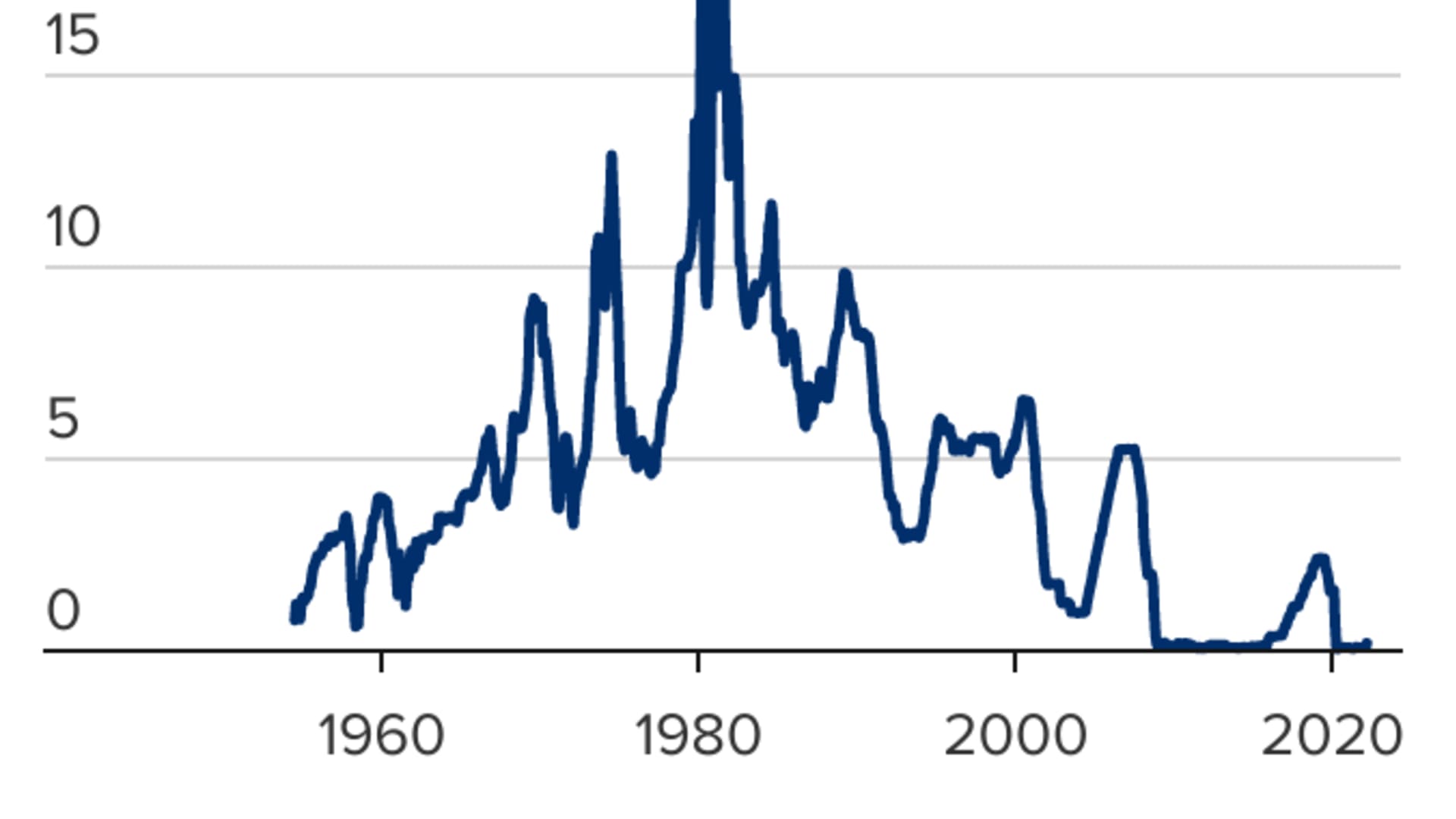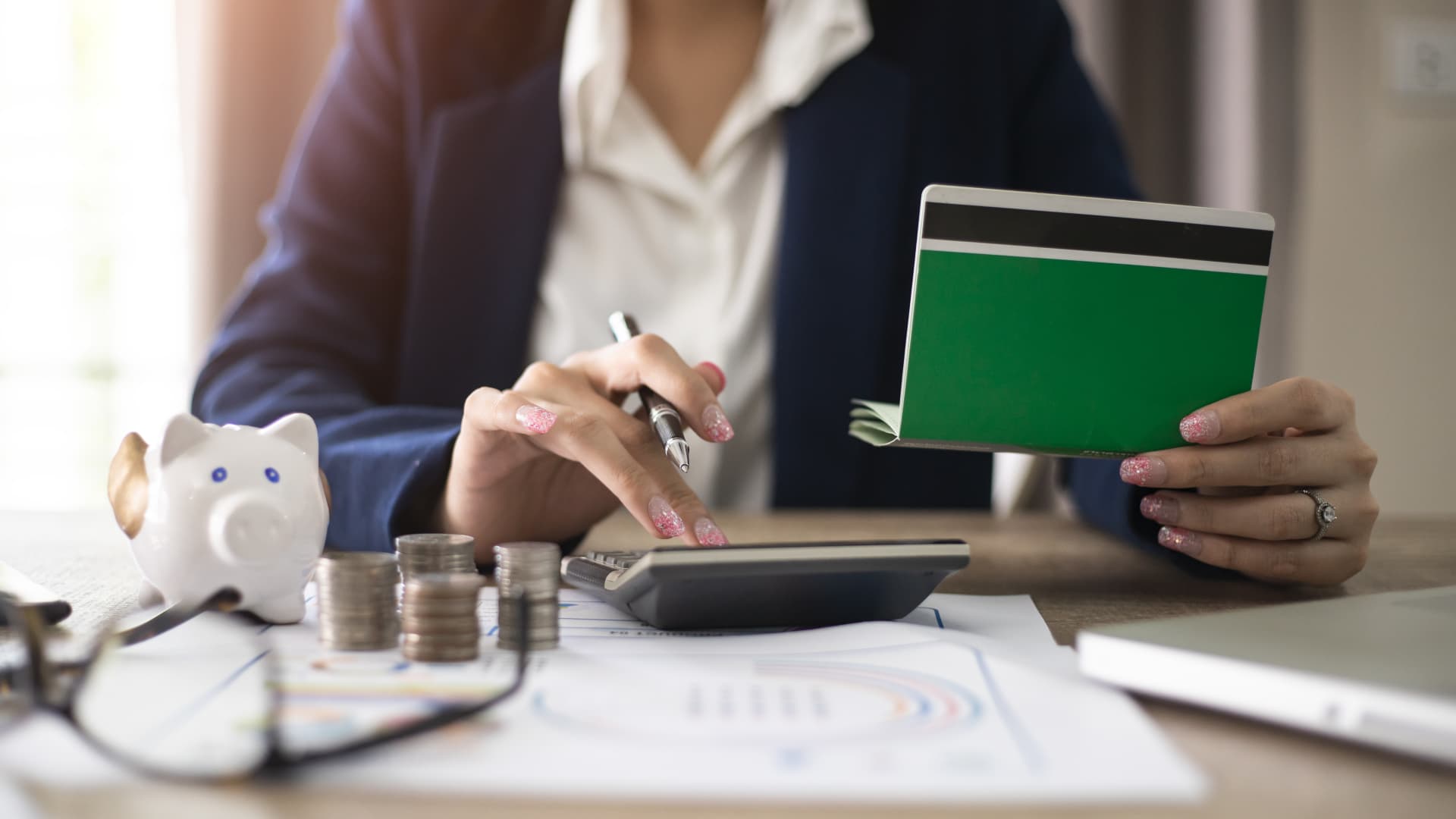
- The Federal Reserve just raised its target federal funds rate by a half point, and that means consumers will see some changes to their borrowing and savings rates, as well.
- Here's how the central bank impacts your credit cards, mortgage, auto loan, student debt and savings account.

The Federal Reserve raised its target federal funds rate by a half point at the end of its two-day meeting Wednesday, notching the largest increase in the benchmark in more than 20 years.
"The Federal Reserve is behind the curve," said Greg McBride, chief financial analyst at Bankrate.com. "They have to raise interest rates a lot — and in a hurry."
We've got the news you need to know to start your day. Sign up for the First & 4Most morning newsletter — delivered to your inbox daily. Sign up here.
The hope is that the Fed can crush inflation while not killing an economy that lately has looked vulnerable to shocks. (The fear is that the central bank will slow down the economy so much that it tips into recession.)
More from Personal Finance:
Relying on stocks for a near-term purchase?
Nearly risk-free I bonds to deliver a record 9.62%
See how inflation erodes your long-term savings
Money Report
For consumers, this aggressive approach could bring relief from surging prices, but it also comes at a cost.
What the federal funds rate means to you
The federal funds rate, which is set by the central bank, is the interest rate at which banks borrow and lend to one another overnight. Although that's not the rate that consumers pay, the Fed's moves still affect the borrowing and saving rates they see every day.
"Rising interest rates mean borrowing costs more, and eventually saving will earn more," McBride said.
"This hints at the steps households should be taking to stabilize their finances — pay down debt, especially costly credit card and other variable rate debt, and boost emergency savings," he added. "Both will enable you to better weather rising interest rates, and whatever might come next economically."
Credit-card borrowers, homebuyers could see hikes
Short-term borrowing rates, particularly on credit cards, are set to jump higher.
Since most credit cards have a variable rate, there's a direct connection to the Fed's benchmark, so expect your annual percentage rate to rise within a billing cycle or two.
"When it comes to raising credit card APRs, banks don't waste time," said Matt Schulz, chief credit analyst for LendingTree.
Credit card rates are currently just over 16%, significantly higher than nearly every other consumer loan and may go as high as 18.5% by the end of the year — which would be an all-time record, according to Ted Rossman, a senior industry analyst at CreditCards.com.
If the APR on your credit card rises to 18.5% in 2022, it will cost you another $885 in interest charges over the lifetime of the loan, assuming you made minimum payments on the average $5,525 balance, Rossman calculated.
If you're carrying a balance, try calling your card issuer to ask for a lower rate, consolidate and pay off high-interest credit cards with a lower interest home equity loan or personal loan or switch to an interest-free balance transfer credit card.
"Now is the time for those with credit card debt to focus on knocking it down," Schulz said. "That debt is only going to get more expensive."
Adjustable-rate mortgages and home equity lines of credit are also pegged to the prime rate. Most ARMs adjust once a year, but a HELOC adjusts right away.
But, because longer-term 15-year and 30-year mortgage rates are fixed and tied to Treasury yields and the broader economy, most homeowners won't be impacted immediately by a rate hike.
This rate hike is already baked into mortgage rates, according to Jacob Channel, senior economic analyst at LendingTree.
The average interest rate for a 30-year fixed-rate mortgage hit 5.55% this week, the highest since 2009, and up more than two full percentage points from 3.11% at the end of December.
By the end of 2022, "something closer to 6% isn't completely out of the question," Channel said. That means anyone shopping for a new house is going to pay a lot more for their next home loan.
On a $300,000 loan, a 30-year, fixed-rate mortgage would cost you about $1,283 a month at a 3.11% rate. If you paid over 5% instead, that would cost an extra $346 a month or $4,152 more a year and another $124,560 over the lifetime of the loan, Channel calculated.
Even though auto loans are fixed, payments are getting bigger because the price for all cars is rising, so if you are planning to finance a new car, you'll shell out more in the months ahead.
Federal student loan rates are also fixed, so most borrowers won't be impacted immediately by a rate hike. However, if you have a private loan, those loans may be fixed or have a variable rate tied to the Libor, prime or T-bill rates — which means that as the Fed raises rates, borrowers will likely pay more in interest, although how much more will vary by the benchmark.
That makes this a particularly good time identify the loans you have outstanding and see if refinancing makes sense.
Savers will have to shop around to benefit

While the Fed has no direct influence on deposit rates, they tend to be correlated to changes in the target federal funds rate. As a result, the savings account rate at some of the largest retail banks has been hovering near rock bottom, currently a mere 0.06%, on average.
"National average deposit account rates, dominated by brick-and-mortar banks, have been slow to rise, and that is expected to continue," said Ken Tumin, founder and editor of DepositAccounts.com.
Thanks, in part, to lower overhead expenses, the average online savings account rate is around 0.5%, much higher than the average rate from a traditional, brick-and-mortar bank.
Top-yielding certificate of deposit rates are above 1% — even better than a high-yield savings account.
If you have $10,000 in a regular savings account, earning 0.06%, you'll make just $6 in interest in a year. In an average online savings account paying 0.5%, you could earn $50, while a five-year CD could pay twice as much, according to Tumin.
However, because the inflation rate is now higher than all of these rates, any money in savings loses purchasing power over time. Still, choosing the right type of account will make a big difference, advised Yiming Ma, an assistant finance professor at Columbia University Business School.
Make sure whatever cash is in savings is getting a better yield thanks to this period of rising rates, she said. "The worst would be if your borrowing cost increases but you are not benefiting from the higher savings rate."






